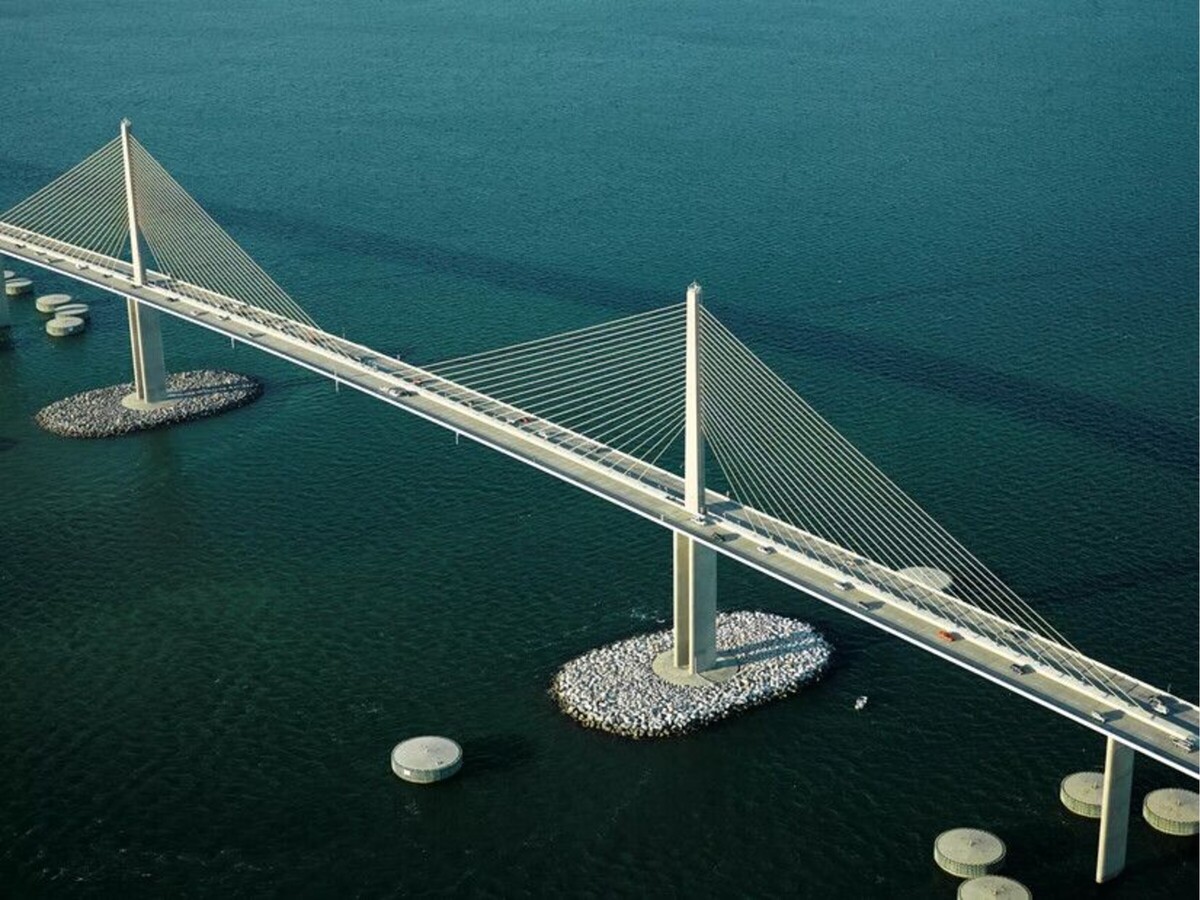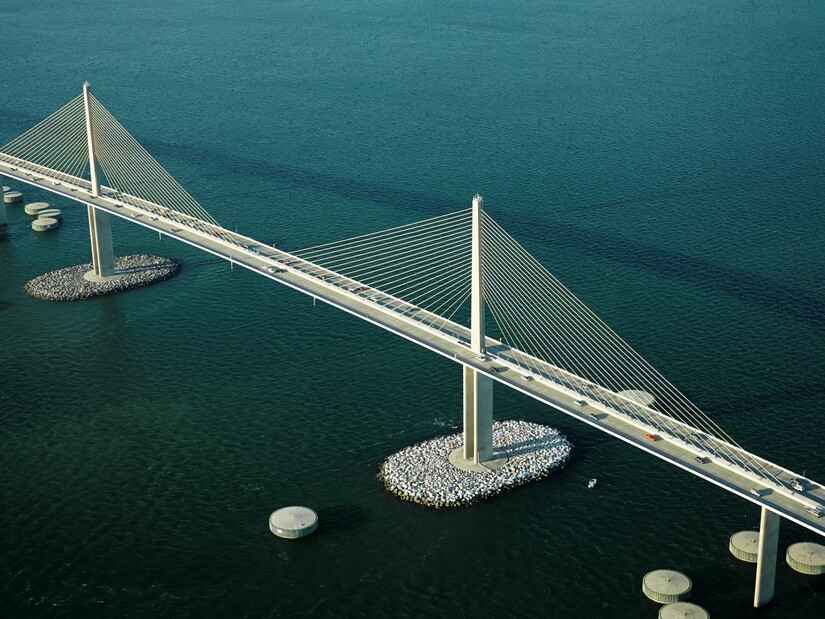Image

Bridge projects across U.S. offer clues to what may replace Baltimore's fallen span
By Scott Neuman, NPR
 Julia Nikhinson/APPart of the collapsed Francis Scott Key Bridge in Baltimore.
Julia Nikhinson/APPart of the collapsed Francis Scott Key Bridge in Baltimore.When the 1,200-foot-long Francis Scott Key Bridge opened in 1977, its enormous steel-truss design was the state of the art for river crossings. But in the decades since, a more modern design that has gained favor could replace the span that was destroyed in March when a cargo ship struck it.
The National Transportation Safety Board is expected to release its preliminary investigation this month into the circumstances of the Key Bridge's collapse into the Patapsco River, which killed six construction workers. Meanwhile, authorities must decide how to replace the structure, which used to carry 40,000 vehicles each day.
What type of bridge, the construction timeline, how much it will cost and who will pay all remain open questions. But projects elsewhere in the U.S. offer clues to what might lie ahead, including what's known as a cable-stayed bridge.
Habib Tabatabai, director of the Structural Engineering Laboratory at the University of Wisconsin-Milwaukee, says that in the past three or four decades, this newer bridge design has all but eclipsed steel-truss designs. "Since about 1990, as far as I know, all the new crossings of the Mississippi have been cable-stayed bridges," he says.
 Mark Wilson / Getty Images/Getty ImagesAn outbound cargo ship passes under the Francis Scott Key Bridge in Baltimore in 2018. A cargo vessel slammed into the steel-truss bridge on March 26 of this year, causing it to collapse.
Mark Wilson / Getty Images/Getty ImagesAn outbound cargo ship passes under the Francis Scott Key Bridge in Baltimore in 2018. A cargo vessel slammed into the steel-truss bridge on March 26 of this year, causing it to collapse.Tabatabai describes cable-stayed bridges as "a modern but mature technology" that "optimizes material usage while minimizing fabrication and labor costs." As a result, he says, "cable-stayed bridges [have] been predominant in low-bid contracts of major new river crossings."
A good analog to Baltimore's FINISH READING HERE
